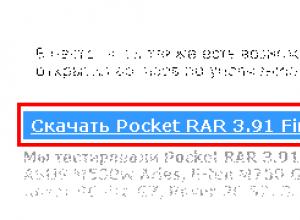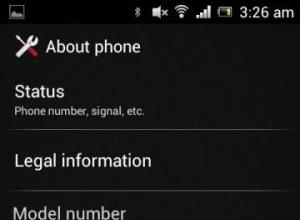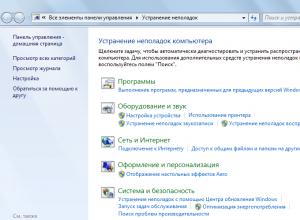How to install widgets on a Xiaomi smartphone. Installing widgets on the desktop in Windows OS
Yandex is a huge portal that is visited by millions of people every day. The company's developers take care of the users of their resource, allowing each of them to customize its start page to suit their needs.
Unfortunately, the function of adding and creating widgets was suspended indefinitely, but the main information islands were left suitable for change. First of all, let's look at setting up the page design.


Now let's move on to setting up specific widgets. To access the parameters, click on the gear icon located next to some columns.

News
This widget displays a news feed, which is divided into categories. Initially, it displays materials on all topics from the list, but still provides access to a selection of them. To edit, click on the settings icon and in the pop-up window opposite the line "Favorite section" open the list of news topics. Select the position you are interested in and click "Save". After this, the main page will provide current news from the selected section.

Weather
Everything is simple here - enter in a special field the name of the locality whose weather you need to know, and click on the button "Save".

Visited
This widget shows user requests for the services you select. Go back to "Settings" and check the boxes for the resources that interest you, then click on the button "Save".

TV program
The program guide widget is configured in the same way as the previous ones. Go to the settings and mark the channels you are interested in. Below, select the number displayed on the page, click to secure it "Save".

For all changes made to be applied, click on the button in the lower right corner of the screen once again. "Save".

To return the page settings to their original state, click on "Reset settings", then agree to the action with the button "Yes".

Thus, by customizing the Yandex start page to suit your needs and interests, you will save time in the future on searching for various information. Widgets will provide it immediately when you visit the resource.
When starting to work with an Android device, you have to deal with such a concept as a “widget”. Such programs are an important element of modern mobile devices, so every novice user naturally has a question: widget on Android?
A widget is one of the most important components of an interface, popular today for managing mobile devices such as smartphones and tablets. They give greater advantage when customizing the desktop to the user's own needs. As a rule, for ease of use, such programs are located on the main screen or on one of the desktops of the phone or tablet, which are displayed as a graphic image (shortcut) on a certain area of the screen.

For a better understanding of what a widget is on Android, we can give an example of informant programs. They provide the owner of the gadget with the opportunity to instantly receive various types of information: time, weather information, news, exchange rates, etc. The necessary information is updated automatically provided that you are connected to the Internet. There are a huge number of variations, sizes, as well as functional areas of such virtual assistants.
Benefits of using graphics modules
Installing programs with their information modules displayed on the main screen has many advantages for the user. The main ones include:
- Instantly obtain the necessary information;
- The ability to perform a quick search, as well as use information in the device itself or on the Internet;
- Quick user access to existing applications;
- Improving device performance;
- Simplified access to management and .
Where can I get the necessary programs?
If they are not available on your device, you will need to download and install them like a regular Android application. Finding a set of standard programs for your smartphone or tablet is not difficult. For example, a sea of free widgets are downloaded in the corresponding section of Google Play (Play Store).

Now let's figure out how to install a widget on Android. This operation can be performed in two ways:
- Download the installation file directly to your mobile device, and then run the installer. possible when the gadget is connected to the Internet;
- If the gadget you are using does not have an Internet connection, then you can download a file with the .apk extension for installation using a personal computer (again, with Internet access). Afterwards, you need to transfer the downloaded file to the gadget you are using and install it.
Displaying applications on the screen
The process of installing widgets is slightly different from installing other programs. The fact is that you need to add shortcuts to the main screen yourself (manually).
 Depending on the OS version, adding methods may vary
Depending on the OS version, adding methods may vary Let's look at how to add a widget to . To display an already installed application, you need to perform the following procedure:
- Look at the screen of your gadget and select a free space where it is best to place the program;
- Open the menu in this place (to do this, when pressing, you should hold your finger in the selected place for a while). The menu also opens when you press a special button or the “Menu” tab on the tablet;
- In the “Add to home screen” menu that opens (the name is located in the top line, highlighted in color), select “Widgets” or “Widgets and applications” (depending on the version of Android OS installed on the tablet);
- In the next list, select the one you need by clicking on it;
- A shortcut to the desired application will be displayed on the screen.

The described one is applicable for earlier versions of the Android OS. For versions 3.0 and higher, the widget is added as follows:
- You need to click on the cross icon located in the upper right corner of the screen;
- The window that opens will contain a list of already installed programs and other applications;
- Select the desired item and drag it onto your desktop.
To move an app to another location on the screen, tap and hold it and drag.
By repeating the sequence of these simple steps several times, you can configure the location of programs on your device.
As you can see, setting up widgets on Android is a very simple operation that can be performed even by beginners in the world of gadgets, especially since many of the programs can become indispensable in everyday activities.
Every Xiaomi smartphone user has to launch various applications through the home screen of their device every day. The owner of the phone knows by heart where frequently used games and programs are located. But not everyone knows how to install a widget on Xiaomi in order to receive useful information without even launching some applications.
What is a widget
Technically, a widget is a minimalistic stand-alone module that works in a specific environment and usually performs one specific function. Simply put, if you configure widgets on Xiaomi smartphones, the main screen of the device will display special modules with useful information for the user, which previously could only be obtained by logging into the application and making some manipulations. For example, from the WebMoney client you can install modules with information about the balance of one of the established electronic wallets. This way, you can find out if new funds have arrived without launching the application.
Installation instructions
Let's look at how to install widgets for Xiaomi Redmi series smartphones and others with the MIUI shell. First, launch the main screen, selecting the desired desktop.

Then, there are two ways to bring up the secondary menu through which you can add widgets:
- Press and hold the screen with your finger until the corresponding menu appears.
- Pinch with two fingers (bring them together by swiping across the screen).
- Press and hold the functional touch button under the display (in the form of three parallel horizontal lines).
After one of these actions, 4 buttons will appear at the bottom of the screen, one of which will be appropriately named “Widgets”.

How to set up
Typically, such modules for various applications are divided into categories:
- to size;
- by functions performed;
- or there is only one add-on, as is the case with WebMoney.
After you have successfully installed the module, you can further configure its size. To do this, you need to hold down the element that appears, wait until the delete icon appears at the top of the screen, and release the screen. After this, an orange outline will be visible around the perimeter of the block; by pulling it, you can increase or decrease the size of the element. Resizing is limited to the set of linear proportions that is available when selecting a size in the “Widgets” menu.

Also, modules can be configured during their installation or after:
- When adding such a module, the WebMoney application allows you to select the following configurations: a wallet, the amount of money in which will be displayed on the main screen, as well as the design color;

- How to configure an installed widget can be understood using the example of the module for the AIMP audio player. After installing the widget, you can enter its settings menu by clicking on the gear and select the optimal colors for this module.

Naturally, each developer himself thinks about how exactly widgets can be configured for his application.
Where to find additional widgets
The Xiaomi user is not limited in the choice of modules for the main screen. For example, on Redmi 3s or any other device, you just need to go to the Play Market or your favorite website, where you can download a variety of mobile software, and then find the application you need. After installation according to the described scheme, you need to enter the widgets menu and check their availability for a specific application.

You can also find individual add-ons that are not specific to any application, but also serve an important role. For example, an original clock, combined with weather information, can be downloaded on the Internet on popular sites and forums.

Most popular widgets
The most popular widgets can be divided into several categories:
- A watch is a must, as the standard interface makes it difficult to quickly check the time, which is written in small font in the upper right corner of the screen. The widget shows not only the time, but also the date, and if you click on these values, you can gain access to full control of functions such as alarm clock, timer, stopwatch and calendar. If they are combined with a weather review, then you can also configure the weather search for a specific area.
- Also, the weather can be displayed in a separate module from popular services: Gismeteo, Sinoptik, etc.

- Widgets for popular media players are on the same level as these categories, since modern users cannot go a day without listening to music and watching videos. Almost every application, when installed, offers the user a set of different-sized blocks with extensive functionality. We are talking about the most popular players: AIMP, Winamp, MXPlayer, etc.

- We can’t help but mention social networks: VKontakte, Twitter, Facebook, Instagram, Odnoklassniki, etc. Convenient blocks will allow you to view the latest news from friends and communities, personal messages, listen to audio recordings from the built-in player, etc. without logging into your page.

- Those who work with electronic wallets can display balance information on the main screen. The most popular services (WebMoney, Yandex.Money, QIWI) allow you to do this without problems.
This, of course, is only a small part of what can be found on the World Wide Web. For the most popular applications, you can even find unofficial widgets created by folk craftsmen who felt that the proposed functionality was not enough.
Bottom line
The article describes in detail the types of widgets, how to find and install them. You can and should experiment with these elements to make your device work optimally. Any unsuccessfully installed item can be easily removed, just like a normal application, by pinching and dragging it to the trash can at the top of the screen.
Of course, it is very convenient to look at your smartphone and know not only the current time, but also to be aware of what surprises the “heavenly office” may present today outside the doors of your own home. Therefore, it is understandable that users want to know how to set the weather on the main Android screen.
There are no special methods for adding a weather widget to the home screen of an Android device; it is installed like any other widget that you downloaded to your device.
What is a widget
A widget is a small application, or part of it, that is usually located on the gadget's desktop. The purpose of the widget is to display information, control the equipment of an Android device with the ability to launch another program, of which it can be a part.
Using the widget, for example, you can find out about processor load, battery status, and you can quickly turn Bluetooth, speakers, GPS, Wi-Fi, etc. on or off. And, of course, by installing a weather informer widget on your home screen, you will always know about the weather “overboard”.
How to add a widget to your home screen
Of course, first, you need to download the program to your device, since their choice is truly huge. But this is not enough, because, unlike other applications, the widget must also be placed on your desktop. Further, our actions will depend on the version of your device.
For Android 3.0 and above:
Call the main menu (in this case it is the button located at the very bottom on the left side of the display). Select the item “ Add to screen". Next we will see a display of desktops at the top of the screen, and below you can select sections “ Applications«, « Icons«, « Widgets“, click the last one. Now swipe left or right, select the desired widget, press it with your finger, and without releasing it, drag it to the main screen:

It should be taken into account that on different device models, the action of adding to the screen may differ, for example, it may simply be the “ + " located in the upper right corner of the display. Or the installed widgets themselves may be located in the “Applications” section.
For Android versions below 3.0
Press and hold with your finger an empty space on the main screen of your smartphone or tablet. In the menu that opens, select “Widgets”. From the opened widgets installed on the device, select the one you need, click on it and wait a few seconds for loading, after which the widget will appear on the main screen:

Widgets can be moved to another location. Just click on it, hold your finger for a while, and then move it.
Well, in conclusion, we suggest watching a video with a description of the excellent application “My Weather Forecast and Widgets” and information on how to configure the widget itself:
One of the first concepts that we come across when we begin to master our first Android tablet or phone is a widget. What is a widget?

A widget is a small program, or part of a program, that is located on the desktop of a device and is designed to display information, control the device’s equipment, and at the same time can launch another program of which it is a part.
For example, there are widgets that can be used to display information such as processor load, battery status, current weather information, and more. There are widgets with which you can quickly turn on or off GPS, Wi-Fi, Bluetooth, speakers and control other equipment of your Android device. There are widgets such as weather widgets, which display information about the current weather and weather forecast on the screen, and which can call the weather application of which they are part.
Widgets can have different sizes - from a minimum size of 1x1, in the style of a regular shortcut, to full screen.
As you can see, everything is very simple - a widget is a program that “lives” on the screen of your tablet or phone and allows you to control it, receive the necessary information, and so on.
Now let's figure out how to add a widget to your desktop. It is not enough just to install a widget on your device like any other application; it also needs to be placed on the desktop.
In Android version 3.0 and higher, you can add a widget using fairly simple manipulations:
1. Click on the cross icon located in the upper right corner of the screen
2. In the window that opens, at the bottom of it you will see lists of widgets, application shortcuts, wallpapers and other things installed on your tablet or phone. At the top of the window there is a list of desktops.
3. Tap on “Widgets” and select the desired widget from the list below (the list can be scrolled right and left). The widget will be placed on the current desktop.
In addition, you can simply drag the desired widget onto any of the desktops.
In earlier versions of Android, installing widgets on the screen is done a little differently:
1. Press and hold with your finger on an empty area of the tablet or phone screen.
2. In the menu that opens, select “Widgets”
3. A list will open with widgets installed on the device.
4. Select the desired widget from the list by tapping on it, and it will be placed on the screen of your device.
Widgets can be moved around the device screen. To do this, you need to press and hold your finger on it, and then move the widget to a new position. In Android 3.0 and above, you can resize some widgets. To do this, you need to select the widget on the screen with a long tap on it, and then change its size by pulling the frame in the place indicated by the diamond-shaped icon.
Latest site materials
Video

Convert JPG to PDF
The PDF format is written in PortScript and is one of the Adobe products. Reading PDF files is possible using Acrobat Reader. The program supports options that allow you to edit and work with these files. JPEG is for
Programs

Android for dummies - a complete guide to using an Android smartphone Instructions for using Android for beginners
Introduction The Android operating system today is hardly inferior to Windows in terms of prevalence.
Programs

It is used in more than 90% percent of smartphones and tablets.
A distinctive feature of its user (graphical) inte
Computer

Windows Mobile Archive Installing a new receiver
Ratings - 8, average score: 3.6 () LG operating instructions, model LGP705 There are also other instructions for this device: Instruction fragment 1 In the mode of viewing pictures or video clips using the Gallery application, touch to select a file

